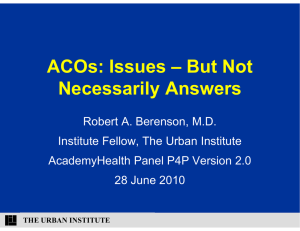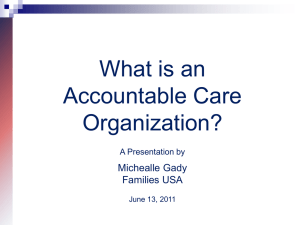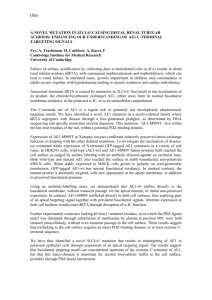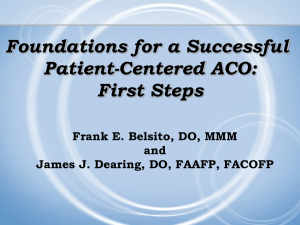Spotlight 85
advertisement
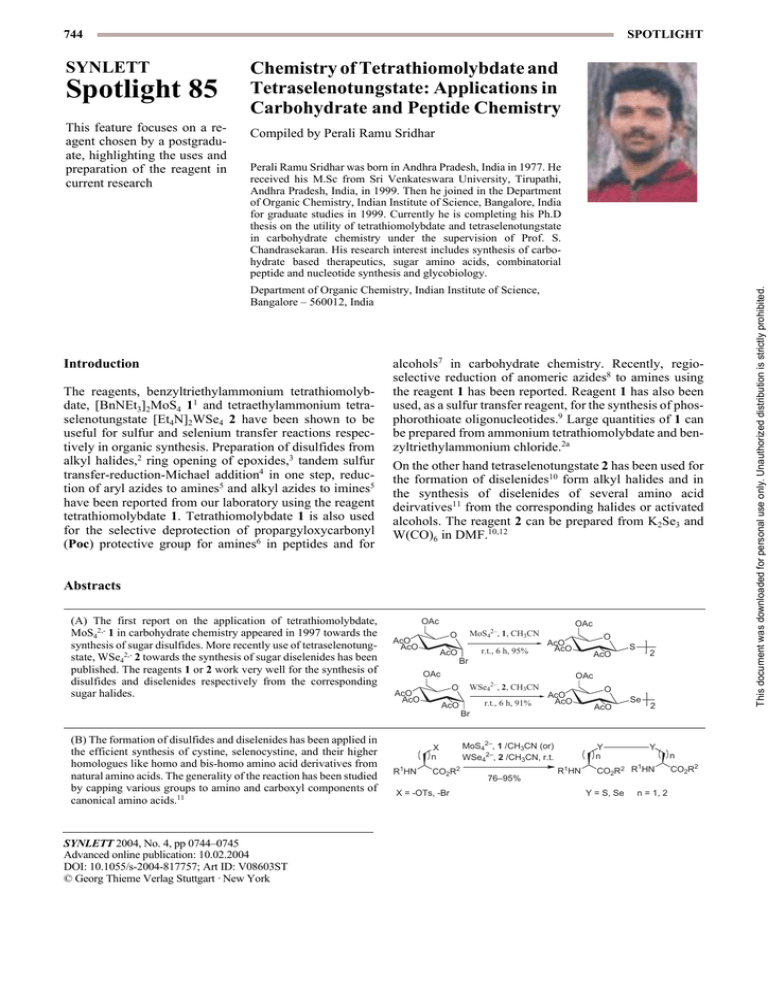
744 Spotlight 85 This feature focuses on a reagent chosen by a postgraduate, highlighting the uses and preparation of the reagent in current research Chemistry of Tetrathiomolybdate and Tetraselenotungstate: Applications in Carbohydrate and Peptide Chemistry Compiled by Perali Ramu Sridhar Perali Ramu Sridhar was born in Andhra Pradesh, India in 1977. He received his M.Sc from Sri Venkateswara University, Tirupathi, Andhra Pradesh, India, in 1999. Then he joined in the Department of Organic Chemistry, Indian Institute of Science, Bangalore, India for graduate studies in 1999. Currently he is completing his Ph.D thesis on the utility of tetrathiomolybdate and tetraselenotungstate in carbohydrate chemistry under the supervision of Prof. S. Chandrasekaran. His research interest includes synthesis of carbohydrate based therapeutics, sugar amino acids, combinatorial peptide and nucleotide synthesis and glycobiology. Department of Organic Chemistry, Indian Institute of Science, Bangalore – 560012, India Introduction The reagents, benzyltriethylammonium tetrathiomolybdate, [BnNEt3]2MoS4 11 and tetraethylammonium tetraselenotungstate [Et4N]2WSe4 2 have been shown to be useful for sulfur and selenium transfer reactions respectively in organic synthesis. Preparation of disulfides from alkyl halides,2 ring opening of epoxides,3 tandem sulfur transfer-reduction-Michael addition4 in one step, reduction of aryl azides to amines5 and alkyl azides to imines5 have been reported from our laboratory using the reagent tetrathiomolybdate 1. Tetrathiomolybdate 1 is also used for the selective deprotection of propargyloxycarbonyl (Poc) protective group for amines6 in peptides and for alcohols7 in carbohydrate chemistry. Recently, regioselective reduction of anomeric azides8 to amines using the reagent 1 has been reported. Reagent 1 has also been used, as a sulfur transfer reagent, for the synthesis of phosphorothioate oligonucleotides.9 Large quantities of 1 can be prepared from ammonium tetrathiomolybdate and benzyltriethylammonium chloride.2a On the other hand tetraselenotungstate 2 has been used for the formation of diselenides10 form alkyl halides and in the synthesis of diselenides of several amino acid deirvatives11 from the corresponding halides or activated alcohols. The reagent 2 can be prepared from K2Se3 and W(CO)6 in DMF.10,12 Abstracts (A) The first report on the application of tetrathiomolybdate, MoS42,- 1 in carbohydrate chemistry appeared in 1997 towards the synthesis of sugar disulfides. More recently use of tetraselenotungstate, WSe42,- 2 towards the synthesis of sugar diselenides has been published. The reagents 1 or 2 work very well for the synthesis of disulfides and diselenides respectively from the corresponding sugar halides. OAc OAc MoS42–, 1, CH3CN O AcO AcO r.t., 6 h, 95% AcO O AcO AcO AcO Br OAc WSe42–, 2, CH3CN r.t., 6 h, 91% AcO AcO AcO Br (B) The formation of disulfides and diselenides has been applied in the efficient synthesis of cystine, selenocystine, and their higher homologues like homo and bis-homo amino acid derivatives from natural amino acids. The generality of the reaction has been studied by capping various groups to amino and carboxyl components of canonical amino acids.11 SYNLETT 2004, No. 4, pp 0744–074509.03204 Advanced online publication: 10.02.2004 DOI: 10.1055/s-2004-817757; Art ID: V08603ST © Georg Thieme Verlag Stuttgart · New York MoS42–, 1 /CH3CN (or) WSe42–, 2 /CH3CN, r.t. X n R1HN 2 OAc O AcO AcO S CO2 X = -OTs, -Br R2 76–95% O AcO Y n R1HN Se 2 Y n 1 CO2R2 R HN Y = S, Se n = 1, 2 CO2R2 This document was downloaded for personal use only. Unauthorized distribution is strictly prohibited. SYNLETT SPOTLIGHT SPOTLIGHT 745 O O (D) Polymer supported tetrathiomolybdate has been used for the deprotection of propargyloxycarbonyl in the synthesis of small peptides and it has also been shown that the protective group is stable under peptide coupling reaction conditions using acid chlorides.6b N H O O COOMe H Me N Me O O RO PocO H 2N 84% MeHN O A, Aq. Na2CO3, O Me A H COOMe Me Me N N Me Ph COOMe H O MoS42–, 1, CH3CN OMe COOMe H )))))), 20 KHz, 1 h COCl CH Cl , 0 °C, 2 2 15 min O SCH3 Resin bound MoS42– MeOH, r.t., Me N Me O Ph COOMe H O (E) Tetrathiomolybdate 1 selectively deprotects propargyloxycarbonyl (Poc) protective group in the case of alcohols in carbohydrate chemistry under neutral conditions at room temperature.7 MoS42–, 1, CH3CN r.t., )))), 1 h SCH3 O O RO Me O r.t., 1.5 h, >90 % HO OMe R = Ac, Cbz, Alloc, Levulinoyl Poc = Propargyloxycarbonyl (F) Tetrathiomolybdate 1 reduces the aryl azides to the corresponding amines and alkyl azides to the corresponding imines. Moreover it selectively reduces the anomeric azides to the corresponding anomeric amines with excellent regioselecitvity.8 AcO MoS42–, 1, CH3CN:EtOH (1:1), O AcO AcO N3 OAc R = Ac,Bz, Bn, Allyl N3 AcO AcO N3 r.t., 3 h, 90% r.t., 3 h, 90% O AcO AcO OAc MoS42–, 1, CH3CN:EtOH (1:1), O OAc (G) Tetrathiomolybdate 1 react with 1, 6 diactivated carbons in hexoses to give the corresponding epithio derivatives (1,6-anhydro derivatives) as the only products in excellent yield.13 OAc N3 O AcO AcO OAc OTs AcO AcO NH2 NH2 S O MoS42–, 1, CHCl3, AcO Br r.t., 24 h, 88% OAc O OAc OAc References (1) Prabhu, K. R.; Devan, N.; Chandrasekaran, S. Synlett 2002, 1762. (2) (a) Remesha, A. R.; Chandrasekaran, S. Synth. Commun. 1992, 22, 3277. (b) Ramesha, A. R.; Chandrasekaran, S. J. Org. Chem. 1994, 59, 1354. (c) Bhar, D.; Chandrasekaran, S. Carbohydr. Res. 1997, 301, 221. (3) Devan, N.; Ramu Shridhar, P.; Prabhu, K. R.; Chandrasekaran, S. J. Org. Chem. 2002, 67, 9417. (4) Prabhu, K. R.; Sivanand, P. S.; Chandrasekaran, S. Angew. Chem. Int. Ed. 2000, 31, 4316. (5) Ramesha, A. R.; Bhat, S.; Chandrasekaran, S. J. Org. Chem. 1995, 60, 7683. (6) (a) Sinha, S.; Ilankumaran, S.; Chandrasekaran, S. Tetrahedron Lett. 1999, 40, 771. (b) Bhat, R. G.; Sinha, S.; Chandrasekaran, S. Chem. Commun. 2002, 8, 812. (7) Ramu Sridhar, P.; Chandrasekaran, S. Org. Lett. 2002, 4, 4731. (8) Ramu Sridhar, P.; Prabhu, K. R.; Chandrasekaran, S. J. Org. Chem. 2003, 68, 5261. (9) Rao, M. V.; Macfarlane, K. Tetrahedron Lett. 1994, 35, 6741. (10) Saravanan, V.; Emmanuel, P.; Chandrasekaran, S. Tetrahedron Lett. 2003, 44, 2257. (11) Bhat, R. G.; Emmanuel, P.; Saravanan, V.; Chandrasekaran, S. Tetrahedron Lett. 2003, 44, 5251. (12) O’ Neal, S.; Kolis, J. W. J. Am. Chem. Soc. 1988, 110, 1971. (13) Driguez, H.; McAuliffe, C.; Stick, R. V.; Tilbrook, D.; Matthew, G.; Wiliams, S. J. Aust. J. Chem. 1996, 49, 343. Synlett 2004, No. 4, 744–745 © Thieme Stuttgart · New York This document was downloaded for personal use only. Unauthorized distribution is strictly prohibited. (C) Tetrathiomolybdate 1 deprotects propargyloxy carbonyl (Poc) group, a protective group for amines, which has been developed in our laboratory. The preliminary results on the highly selective deblocking of Poc group from sulfur containing amino acids and peptides using tetrathiomolybdate 1 has been reported recently.6a
